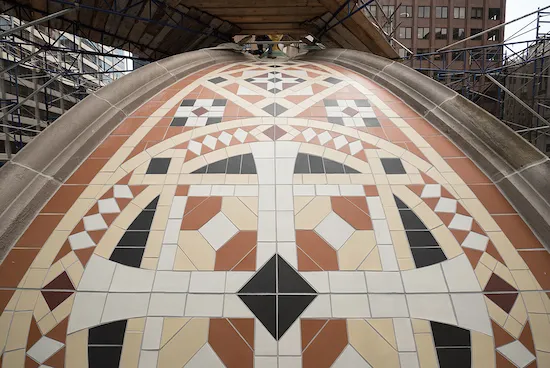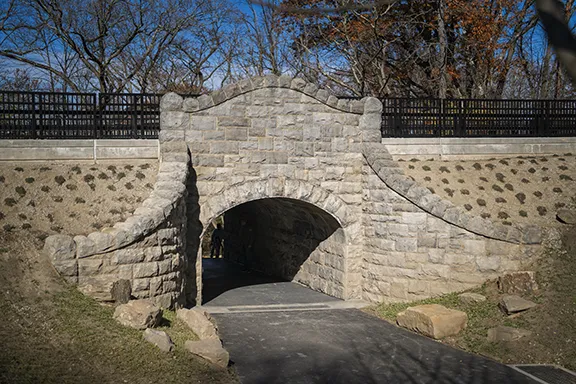In a constantly changing world, restoring historic buildings ensures that the stories and legacies within the walls of these buildings are preserved for future generations.
Historic building restoration is not merely about maintaining old structures but keeping the stories of those who came before us alive, enriching our cultural heritage, strengthening local economies, and inspiring communities.
Keep reading to learn Graciano’s perspective on the question, “Why is historic restoration important?” and how it impacts our lives in various ways.
Why Is Historic Restoration Important? Preserving Cultural Identity
Connection to the Past
One of the most important answers to the question, “Why is historic restoration important?”, lies in its ability to maintain a connection to the past. Historic buildings are like time capsules, tangible links to the past. Apart from that, the detailed architectural designs and the materials used give us a glimpse into our ancestors’ traditions, values, and ways of life.
As the most experienced restoration firm in the US, Graciano has played a crucial role in protecting many historic landmarks that have stood the test of time, including Eaton’s Neck Lighthouse and Grand Central Terminal’s Oyster Bar, which has told tales of the hustle and bustle in Manhattan since 1913.
Why Is Historic Restoration Important? Economic Benefits of Restoration
Another compelling reason why historic building restoration is important is its positive impact on local economies. Restored landmarks often become tourist attractions, drawing visitors to explore their historical significance.
 For instance, the Oyster Bar in Manhattan’s Grand Central Terminal continues to attract hungry travelers, contributing to the vitality of the surrounding area. Increased tourism not only supports local businesses but also generates revenue for ongoing preservation efforts, ensuring that these landmarks remain accessible for future generations to enjoy.
For instance, the Oyster Bar in Manhattan’s Grand Central Terminal continues to attract hungry travelers, contributing to the vitality of the surrounding area. Increased tourism not only supports local businesses but also generates revenue for ongoing preservation efforts, ensuring that these landmarks remain accessible for future generations to enjoy.
Furthermore, restoration projects create specialized jobs for masons, artisans, architects, historians, and other professionals. These projects require expertise in historical preservation techniques, ensuring that the integrity of the original structures is maintained.
By investing in restoration initiatives, communities preserve their cultural heritage and stimulate job growth and economic development, fostering prosperity for years to come.
Why Is Historic Restoration Important? Aesthetic and Inspirational Value

Beyond their historical and economic importance, historic buildings possess an undeniable aesthetic appeal that enriches the character of our communities. These structures showcase diverse architectural styles, reflecting their respective periods’ cultural influences and artistic trends.
From the ornately decorated façades like those of St. Bart’s to the stately grandeur of Neoclassical civic buildings, preserving these architectural treasures means we ensure that future generations can appreciate the beauty and craftsmanship of the past.
Moreover, when residents see their historic landmarks restored to their former glory, it instills a sense of community for their shared heritage These buildings become focal points for community gatherings and cultural events, serving as symbols of resilience and identity for generations to come!
Graciano’s Successful Historic Restorations
Graciano has undertaken numerous successful restoration projects, overcoming challenges to breathe new life into historic landmarks and bring a future to the past.
One notable example is the Historic Highland Park Pedestrian Tunnel in Pittsburgh, which had been closed due to the danger of collapse caused by erosion, weather, and tree roots pushing out the stone blocks from the arched tunnel.
Graciano worked closely with the Pittsburgh Parks Conservancy, carefully removing, numbering, and cataloging the rocks and supports on either side and top of the tunnel along Reservoir Drive. This method ensured they could be put back in their exact original positions. All of the hard work resulted in the restoration of this historic structure, allowing it to be used again and serve Pittsburgh families once more.

Another noteworthy project is the restoration journey of Belvedere Castle, where Graciano faced challenges such as aging infrastructure and the need to integrate modern facilities without compromising the building’s historical integrity.
Through careful research and craftsmanship, Graciano achieved a blend of old and new, preserving the castle’s authentic charm while adding modern upgrades for better resilience and an improved visitor experience.

So, these projects that Graciano had successfully undertaken show the invaluable role that restoration plays in preserving our shared heritage while ensuring the functionality and longevity of these amazing old buildings, once again answering the question of why is historic restoration important.
Graciano Gives a Future To The Past
By investing in historic restoration, we honor the skills and hard work of those who came before us and ensure that future generations can experience and learn from these tangible links to our collective history.
If you are passionate about preserving our history and would like to explore restoration opportunities, reach out to Graciano for expert restoration services. With a team of skilled professionals and successful projects, Graciano is dedicated to giving a future to the past!


